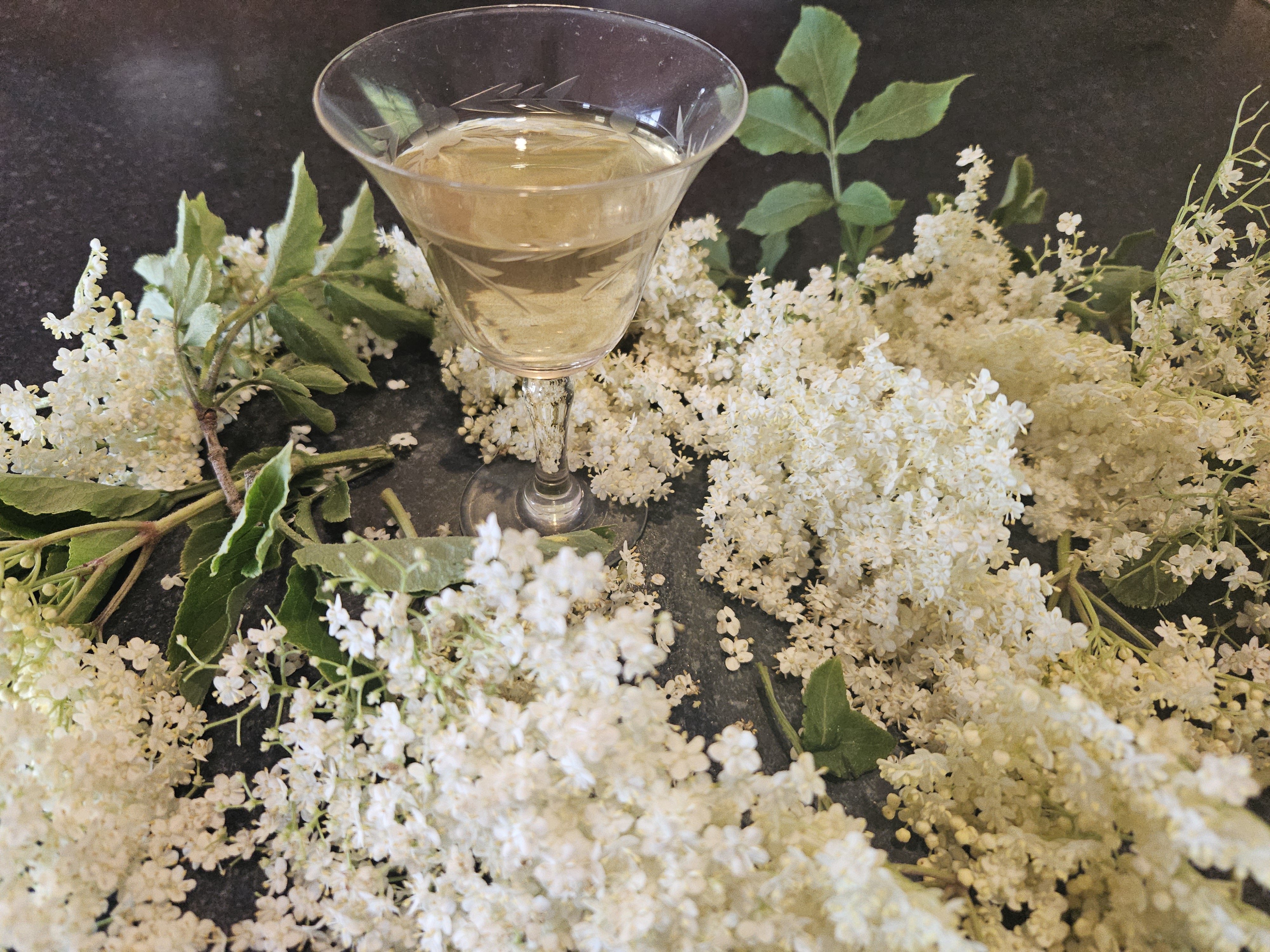
They are common enough, as the birds spread their seeds far and wide, and at this time of year the pretty white, lacy flowers are easy to spot. It is a good idea to take note of the location of elder trees if you intend to forage for elderberries in autumn, when the berries are not nearly as obvious as the flowers are now.
I assume everyone knows how to make elderflower champagne, which has become a lot safer to make since the advent of plastic screw top fizzy drink bottles. I have had some dramatic glass beer bottle explosions from adding too much sugar to my fermented drink. Another safer option is to make elderflower cordial, then you can just add it to a tall glass of soda water and ice on a hot summer day.
I was intending to make elderflower liqueur after picking a big bunch of elderflowers a couple of days ago, but I found I had no alcohol to hand with which to make it. Rather than let the flowers go to waste I decided to make something new.
Elderflower and lemon jelly.
Cut as much stalk as you can, easily, off the elderflower florets.
Place them in a pot and cover with water.
I used 500ml of water over a big handful of florets.
Add the juice of a lemon, and then throw in the remains of the lemon too.
Bring the pot to the boil, pushing the flowers and lemons down into the water.

Strain through a jelly bag (piece of muslin).
Add half a packet of pectin jam setting mix (this is necessary as flowers don’t contain pectin the way fruits do).
Add the same volume of sugar as you have liquid. So assuming you have 500mls of liquid, add 500mls of sugar.
Add 1 tsp of citric acid. This helps with setting and gives the jelly a nice tangy flavour.
Simmer and stir until setting point is reached. This is the point when a smear of the liquid on a plate, left to cool for a couple of minutes, wrinkles in front of your finger, when you push your finger through it.
Pour into two warm sterilised jam jars.
It has an amazing delicate flowery lemon taste, and would lend itself to being served on pikelets with cream, or perhaps with a cream sponge cake. I think passionfruit would be a good match for it too.
The elderflower liqueur is even easier. In a big jar which seals well (so the alcohol doesn’t escape for the angels to get drunk on — this is a Scottish whisky-making fable, any alcohol evaporated from the whisky barrels is the angels’ share) place a good couple of handfuls of elderflowers, 20-30 florets, and cover them with vodka.
Leave the jar in a dark place for a couple of weeks.
Strain through muslin and add sugar to taste. Shake to dissolve.
Bottle.
The liqueur can be served chilled in small chilled glasses, or try with ice and soda or tonic.
Elderflowers and summer are a perfect match.
Hilary Rowley is a frugal, foraging foodie from Waitati. Each week in this column, one of a panel of writers addresses issues of sustainability.












